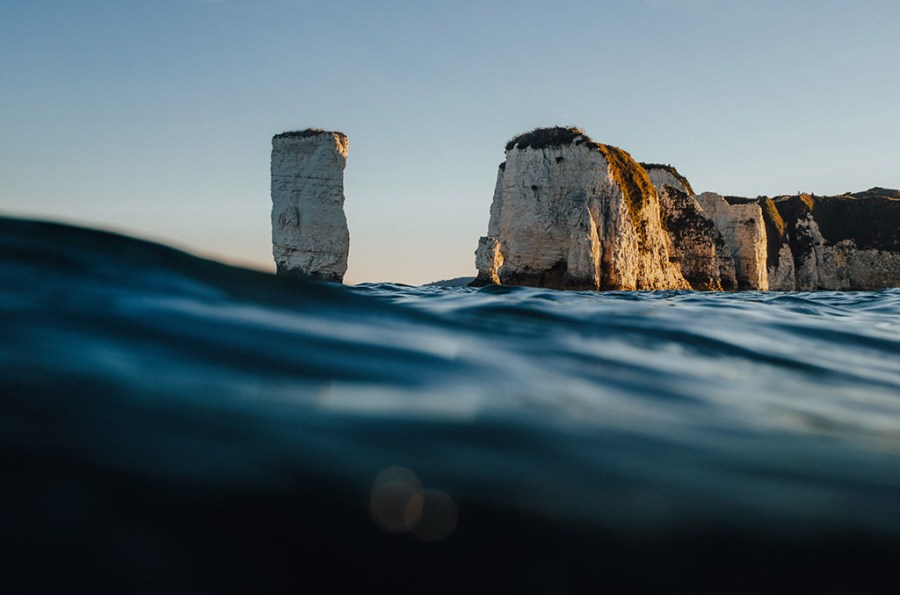One of the most exciting and challenging subjects for any landscape photographer is dramatic coastal and seascapes. Seascapes present many photographic opportunities… from sweeping vistas and crashing waves to close-up details, human interaction and even the details beneath the surface. Photographers Emily Endean and Rachael Talibart share some secrets for stunning coastal photography.
Emily Endean’s diverse approach to coast and seascape photography
The ocean is my favourite subject to photograph, whether at the shoreline or out in the water – it’s something I’ve always been drawn to. The connection runs deep in my soul, probably from a childhood spent in the sea, jumping the waves no matter the weather. More often than not, you will find me bobbing around in the water at dawn with my camera in hand, or hanging out at the shoreline, shooting both personal and work projects. It only felt natural as I got further into photography that the ocean became my focus and subject. From the movement of the water at the shoreline to people out in the water, I became fascinated by continually seeking new perspectives and new ways to capture this. Seascapes are such a versatile subject that there’s always something new to learn, which for me is part of the fun of photography!

Time of day
Ever since I got into landscape and seascape photography I quickly learnt time of day was everything in how a scene is represented. Seeking out the best light became my obsession! We all know that sunrise and sunset can display a spectacular change in light, but it’s also about the times leading up to and after those moments. Like being out for sunrise 45 minutes before the sun is even going to rise and seeing how the colour behaves in the clouds and how it changes as the sun comes up and touches everything in front of it, bringing a warm glow to the land and the sea.
I love to use the sun’s light directionally once it’s too bright to shoot into; side light is a beautiful thing, helping to reveal details and shadows. It helps portray the atmosphere of the moment. I tend to shoot in manual mode as this gives me much more control over the amount of light I’m letting in and how my camera sees the scene in front of me. If anything, I’ll underexpose the scene, shooting in raw to retain as much of the information in that file as possible.
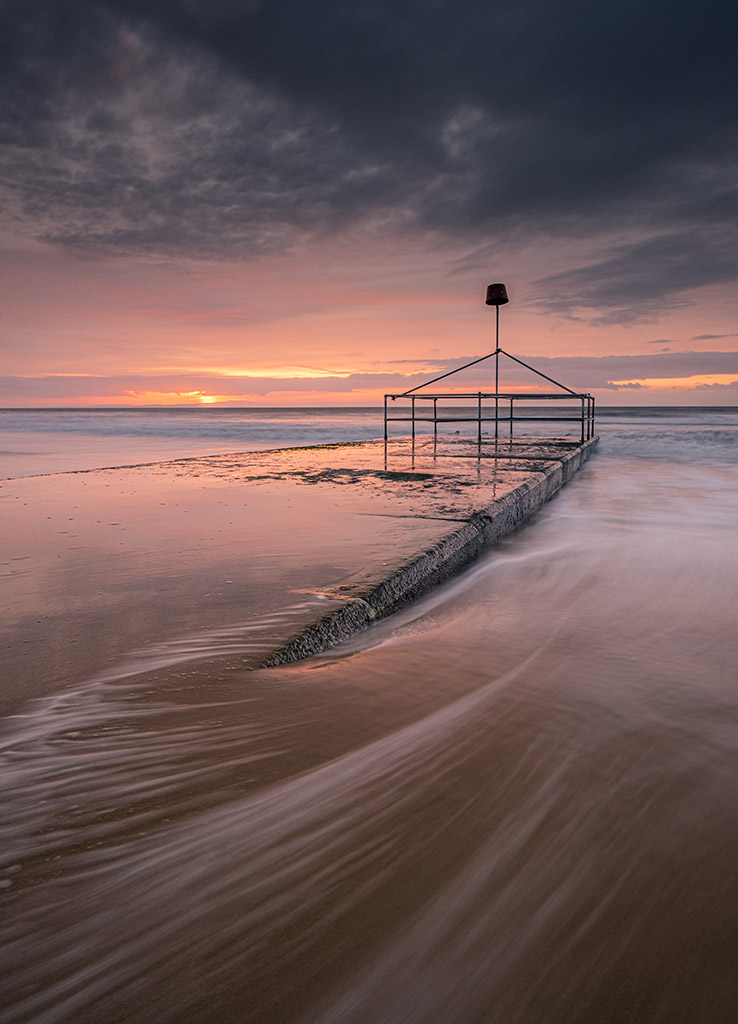
Challenges
There can be countless challenges faced when photographing seascapes, and one of those might be the conditions thrown at you. I check my weather apps constantly before heading out, and a frustration I am sure many of you can relate to is that sometimes these are completely wrong! They do provide us with an insight on what to expect but I’d always be prepared just in case it doesn’t go as planned.
However, I do find challenges like this work in my favour, so rather than being stuck on a certain approach or a certain shot it pays to stay reactive to what’s unfolding around you. Especially by the sea, with so many elements in play. It can force you to see things differently, and being able to adapt can help you grow creatively. Heading out in challenging conditions or being ready during those fleeting moments of great light are sometimes the most special.
Another challenge is not only ensuring your gear is reliable to be out in any weather, but keeping the salt water at bay! You can be as careful as you like but sea spray will get in the legs of your tripod. My advice would be to ensure your camera gets a dry wipe over to ensure no sand is in any of the elements.
Filters can be easily cleaned with any microfibre lens cloth and screen cleaning spray. My cleaning spray of choice is the Urth cleaning spray, as it’s gentle yet effective, has no chemicals, is affordable and a 30ml bottle lasts me ages. Next, the tripod. Get it into the shower! A good fresh water rinse off, with all the legs at full extension, should get it all nicely cleaned and then let it dry off. I tend to do this before leaving my location. There are taps all along our local beaches so it’s convenient and easy to do it straight after a shoot before packing up and heading off.
With regards to my camera, the Fujifilm X-T5, the weather-sealing is brilliant. Not only did I choose this make and model for its compact size and the beautiful image quality it produces, I also chose it because the Fujifilm X-series models are so well known for their reliability. I’ve had the X-T2 and X-T3 in the past and I can honestly say I would take them out in any conditions – the weather-sealing hasn’t let me down and that’s without any additional rain covers.

Lens selection
I’m a firm believer in carrying everything with you that you might need, as you don’t know what you might be presented with and I’d never want to miss the shot! This means I carry quite a varied lens selection with me most of the time. From a wideangle to a tele-zoom, it’s all about being prepared. Sometimes the action is immediately in front of you in the details of the water, sometimes it’s way out in the swell and you need a longer reach. So, my kit bag can be pretty jam packed on most shoots – the (Fujifilm) 14mm, 16-80mm 30mm, 60mm and 55-200mm are my main choices.
See our guide to the best Fujifilm X-mount lenses.
Preparation is key
With my personal approach to seascapes being quite varied, before I head out I already know which way I’m approaching my photography for each shoot, as preparation is an important element. If I’m heading out for sunrise then I would have prepped the night before, getting my bag packed and ready so that the only thing I need to think about is brewing a coffee, getting dressed and heading out the door. If I am heading out into the water then I will have checked over my housing, making sure that the port is clean inside and out, then I will make my lens selection for the shoot and secure my camera body inside, locking it in.
If I am going to be shooting from the shoreline, then I’ll check over my kit bag, making sure I have three or four lenses to cover all bases, filters packed, lens cloths, L-bracket attached and ready, and my tripod strapped onto my bag. With either approach, of course I will check on batteries
and memory cards ahead of this to ensure there are no surprises on the morning.
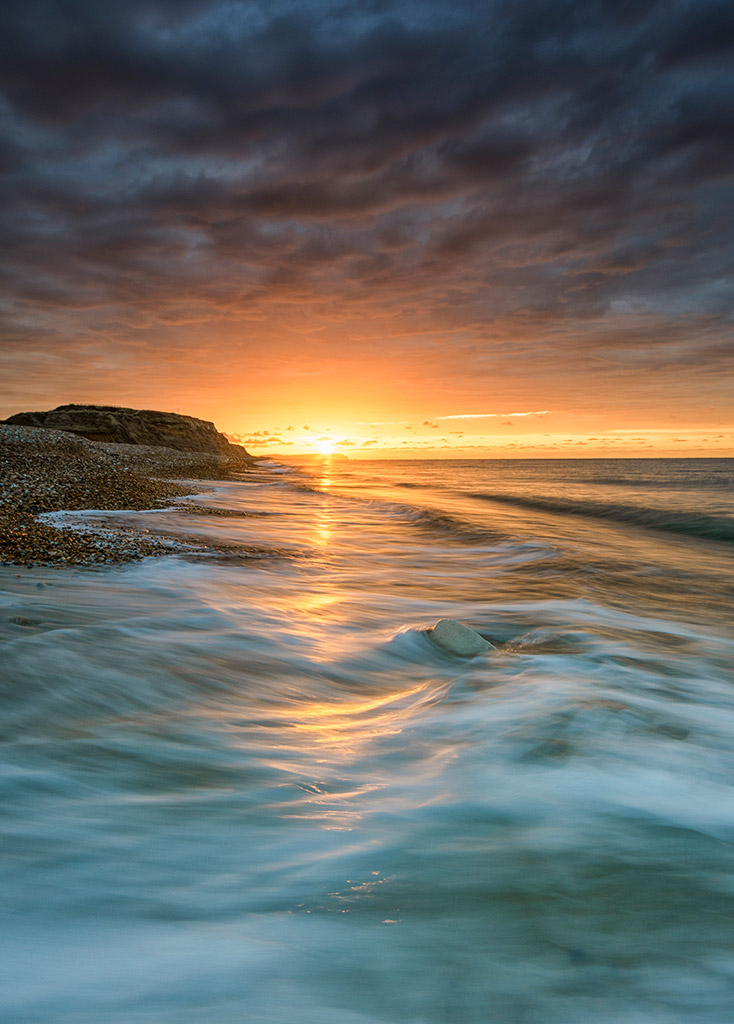
A unique perspective
When I am out in the water I love to photograph in a style of partially under and over the water. I find that it gives an interesting perspective and one that’s quite unique. It can draw the viewer in and make them feel like they are in the water with this eye level view of the ocean. It could be photographing the sun as it creeps up over the horizon, or portraits of the surfers and anything in between.
Being out in the water pre-sunrise can be exciting, as with any seascape sunrise, approached traditionally or not, you never quite know how it’s going to unfold. I’ll be prepared with my settings and if anything, I’ll aim to underexpose the image. The reason for this is that once the sun appears everything gets much brighter very quickly, and you don’t want any of the images with blown-out highlights.
I will want to retain the details and the tones of the sun rising. With photography of this nature, it can get very creative and therefore there’s no hard and fast rule with the settings. I’ll be shooting in manual mode usually with a shallow depth of field, a shutter speed around 1/500sec and an ISO as low as I can go. As we know with all photography – it’s all dependent on the light!
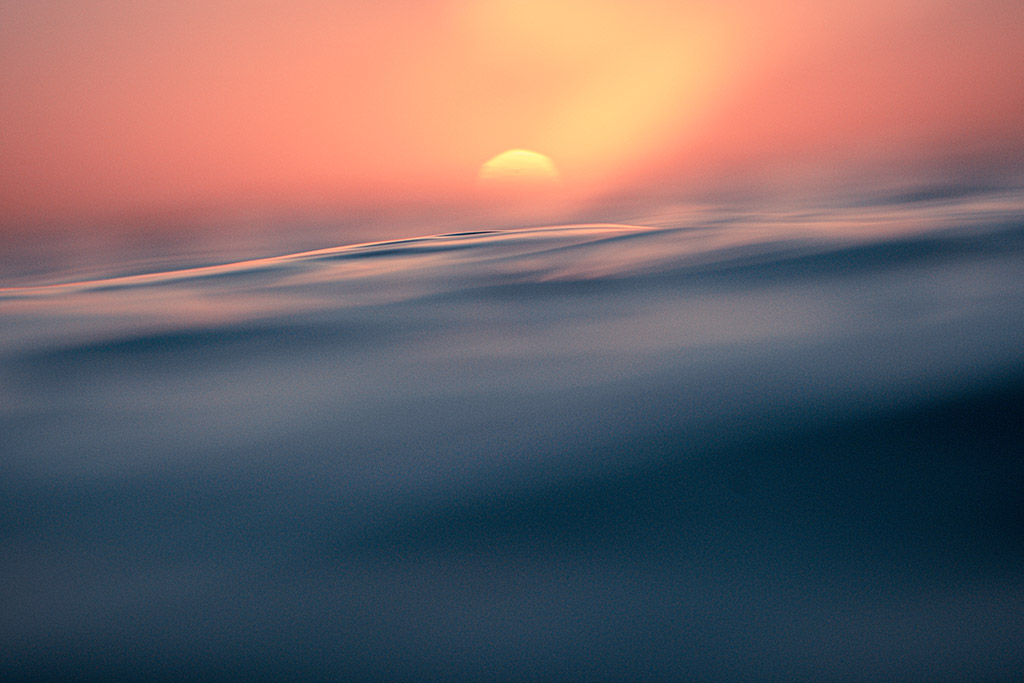
Location choices
My main locations to go to are all along the south coast of the UK. Growing up in Bournemouth and living there all my life, I have to mention the stretches along Bournemouth Pier, Boscombe Pier, Hengistbury Head and Sandbanks, and they have been my go-to areas. I also love the Studland Peninsula for photographs out in the water.
The Jurassic coast is great for varied photographs, including some incredible geology and rocky shorelines or big cliffs, from Durdle Door to Old Harry Rocks or Kimmeridge Bay and the lesser-known spots in between. I love just getting out with the camera and being able to document these fantastic places. I travel the UK in my van so these days the locations that I visit are all over, but I always gravitate to the coast.
Emily’s favourite subjects to shoot on the coast and settings to use
Traditional seascapes
By this I mean the way most landscape photographers would approach this type of location – settling on your composition with a landmark or rocks around a third of the way in. Ensuring your camera is secured on a tripod, with settings of f/11 and ISO 100 and a shutter speed to allow some movement, maybe a couple of seconds.

Surfers at the shoreline
Adapt to a quicker way of shooting and become more reactive to life moving around you. Watching the surfers going in and out of the water and capturing moments at the shoreline will require a faster shutter speed, so I’d aim for 1/250sec with a wide aperture and a low ISO if possible – anything up to 1000 shouldn’t cause any noise issues.
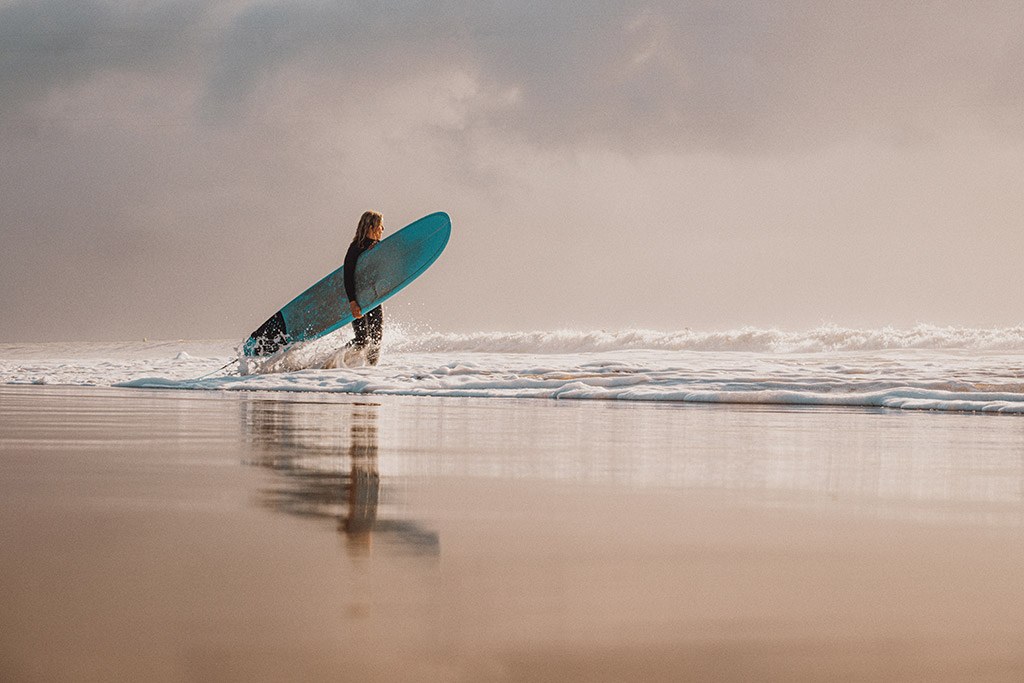
Surfing action
Still photographing from the land and switching to a zoom lens to capture the action unfolding out in the surf. Try a shutter speed around 1/15sec for a creative approach and moving with the surfer to retain a level of sharpness where needed. This method can be trial and error, but when it pays off it can really work.
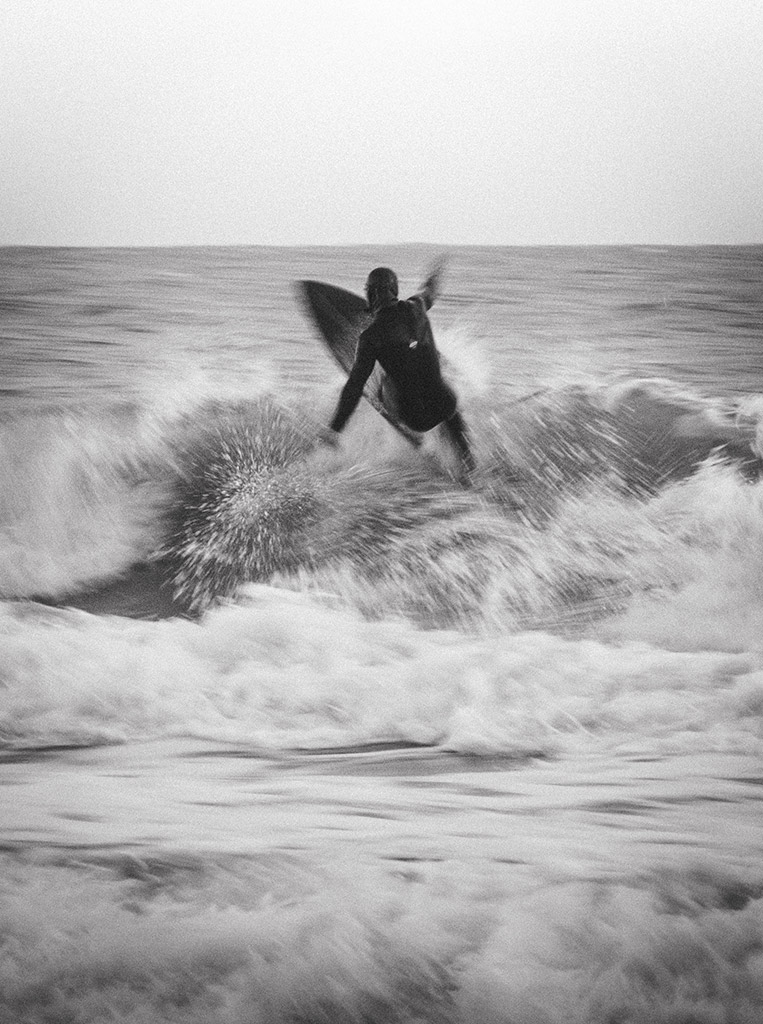
Shooting from the water
Try capturing those traditional scenes we are familiar with and see them in reverse, from the water instead of the land. When I enter the water, I’m already set up with a shallow depth of field, a shutter speed around 1/500 sec and an ISO as low as I can go. I can make some adjustments, however I prefer to be ready to shoot as it can be tricky to adjust!

Abstract moments
Once you are out in the water there are so many other ways to capture your environment. It really brings out my creativity using macro lenses and looking for smaller details. With a similar camera set-up, I’ll focus on the ripples and water movement as close to me as possible, which is where a macro lens comes in very handy!
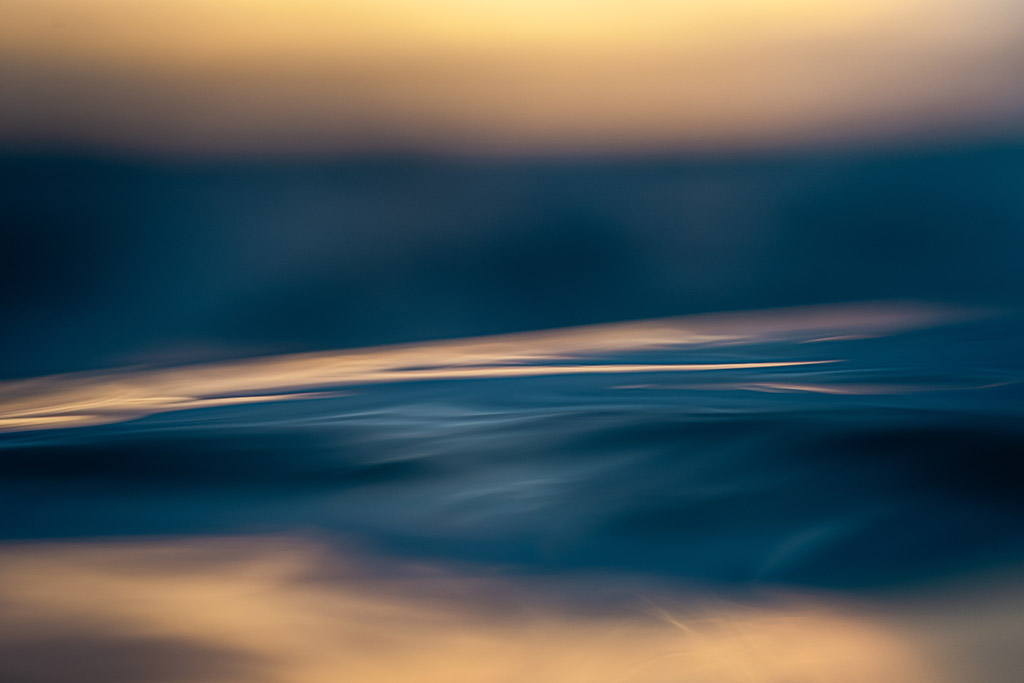
Emily’s kit list for coastal photography
Underwater housing
The first step when taking your camera out into the water is thinking about keeping your gear safe and dry. I’ve tried many types of housing, from a cheap zip lock bag (a little scary with your equipment inside!) to finding a reliable and trustworthy housing which I now use exclusively. I use a dedicated AquaTech Edge Pro Water Housing for the Fujifilm X-T5. It’s well worth the investment to keep your camera nice and safe, and dry! The AquaTech Edge is compact and lightweight, and perfect for the type of photography I shoot when out in the water.
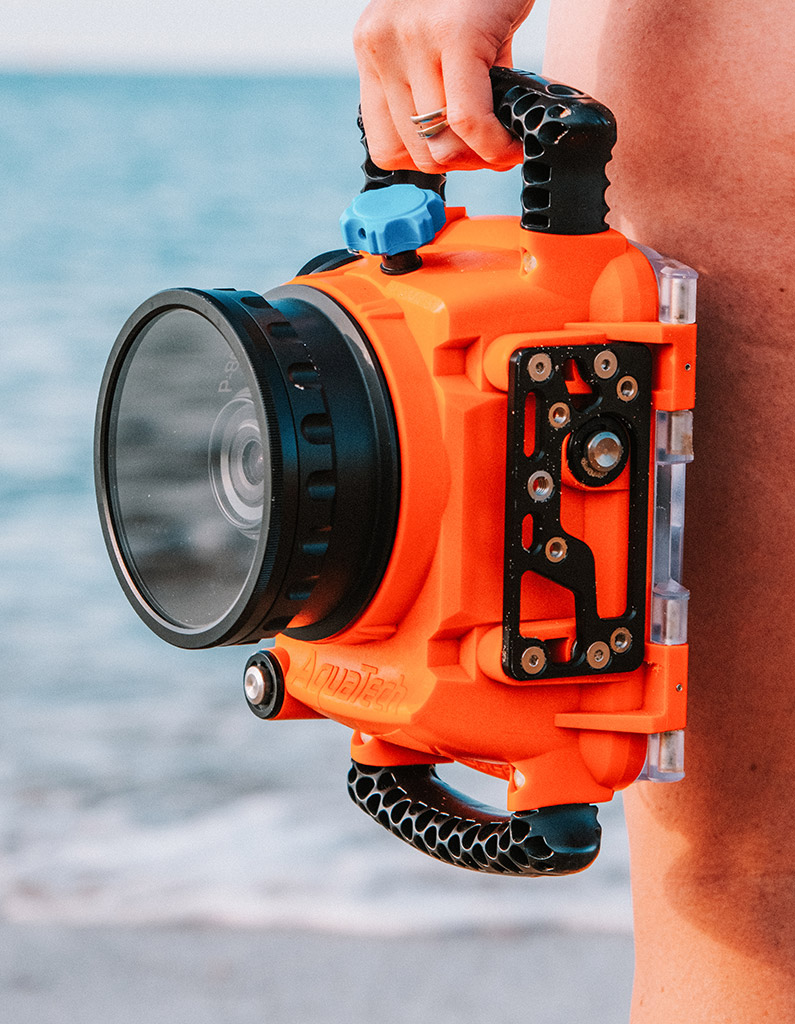
Underwater lenses
Next up are my lens choices when out in the water. My go-to lenses are currently the Fujifilm 30mm and 60mm, both macro lenses. Not only do these give a great range of perspective, they also allow me to shoot at a very close range to record all the details in the water.
Tripod and bracket
A good tripod is essential. I use the 3 Legged Thing Bucky and the firm’s dedicated X-T5 L Bracket, Ellie. Bucky is a carbon fibre tripod, lightweight yet sturdy and easy to fold down. Travelling around means I need a compact tripod that is easy to attach onto my bag and quick to set up when needed.
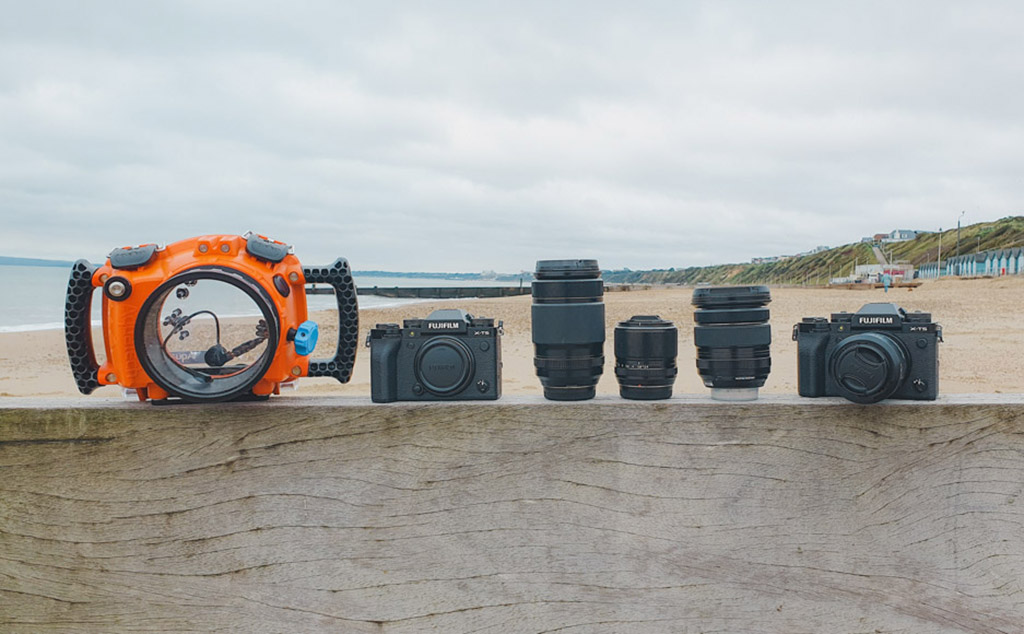
Filters
I use Kase Filters, ranging from graduated filters to a polariser and neutral density (ND) filters for a creative approach. I wouldn’t be without the ND filters, they are a great bit of kit for unleashing your creativity. I use them to create some motion through extending the shutter speed – anything from half a second to 30 seconds and beyond. See the best camera filters for photographers.
Lenses
My lens choice on land can vary greatly depending on whether I’m photographing the movement of the ocean or the surfers out there in it. But, as a rule, my go-to for seascapes is the Fujifilm 14mm for a lovely wide view, making the most of the foreground and movement of the water in front of me. When photographing the surfers from the shoreline I’ll switch to the Fujifilm 55-200mm to be able to get right in where the action is happening!
Coast and seascape photography tips from Rachael Talibart
Text by Tracy Calder, all images below credit Rachael Talibart
For someone who describes themselves as a “poor swimmer and a poorly sailor”, it seems incredible that award-winning coastal and seascape photographer Rachael Talibart chose the sea as her muse. “I’m afraid of the sea,” she laughs. “I think it’s dead scary, but that’s part of its appeal to me. You feel very alive when you’re afraid.”
A former solicitor, Rachael has spent a large chunk of her life at university, where she studied the sublime – a term sometimes used to describe the delicious terror we experience when faced with nature at its most forceful and immense – think mountain ranges, deep chasms, raging seas etc. “My big wave pictures are hugely informed by the fact that I’m afraid of the sea,” she reveals. However, this fear is matched by a deep respect and an even greater love of the ocean.
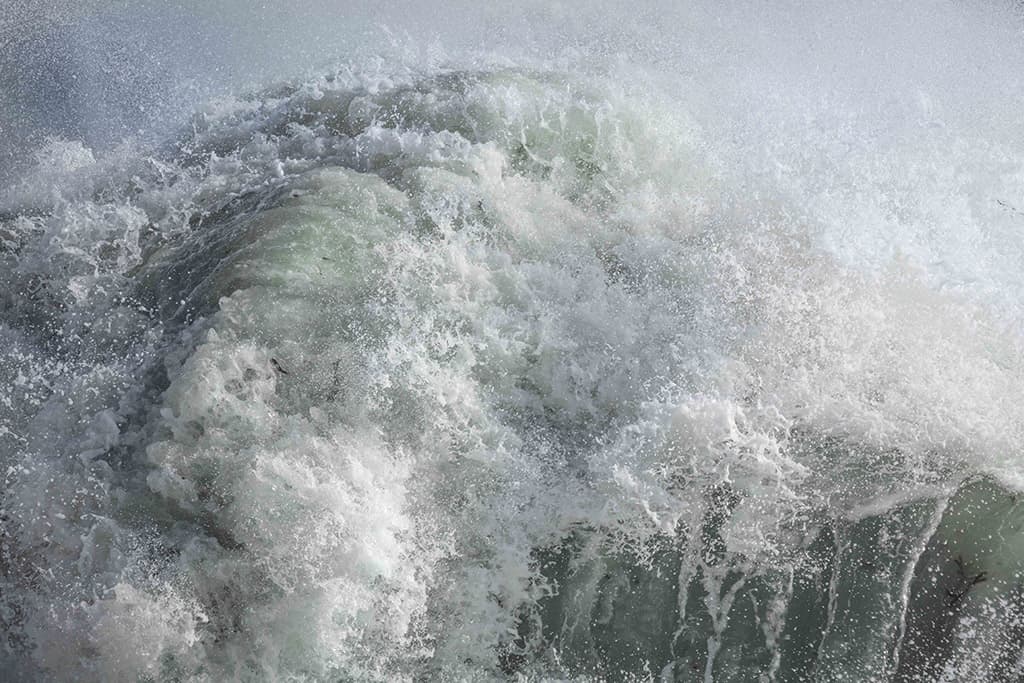
Find a mentor
When Rachael decided to take her coastal and seascape photography more seriously in 2015, she embarked on a mentorship with fine art photographer Jonathan Chritchley. At this point, she was selling the occasional print and running a few workshops, but the returns barely covered her expenses.
“I would not have described myself as even a semi-pro back then,” she admits. So, investing a considerable sum of money in her photography was a big commitment. But, having been in workshops with Jonathan in the past, she was confident that with his advice and hard work, she could move her photography up to the next level. “Psychologically it was huge,” she recalls, “It was me saying to myself, right you’ve made the decision, you want to go for it, commit fully and make sure that you’ve got something to lose.”

Photograph what you love
Jonathan sent Rachael a detailed questionnaire and designed a bespoke programme based on her responses. “Some of the stuff he got me to do seemed a bit strange, but I trusted that he had a plan, and he did”, she recalls. One piece of advice that struck a chord was, ‘Photograph what you love.’ The more Rachael thought about it, the more her mind (and heart) came back to the sea. “Everyone is trying to find their voice and one of the easiest ways to do it is to focus on what you love,” she suggests.
“Try and think of a thing that you could spend longer looking at than anybody else without getting bored, that way you will see more, explore a subject more, and you will find new ways of expressing it. I think you have to have something to say in your photographs apart from ‘this is what it looked like’.”
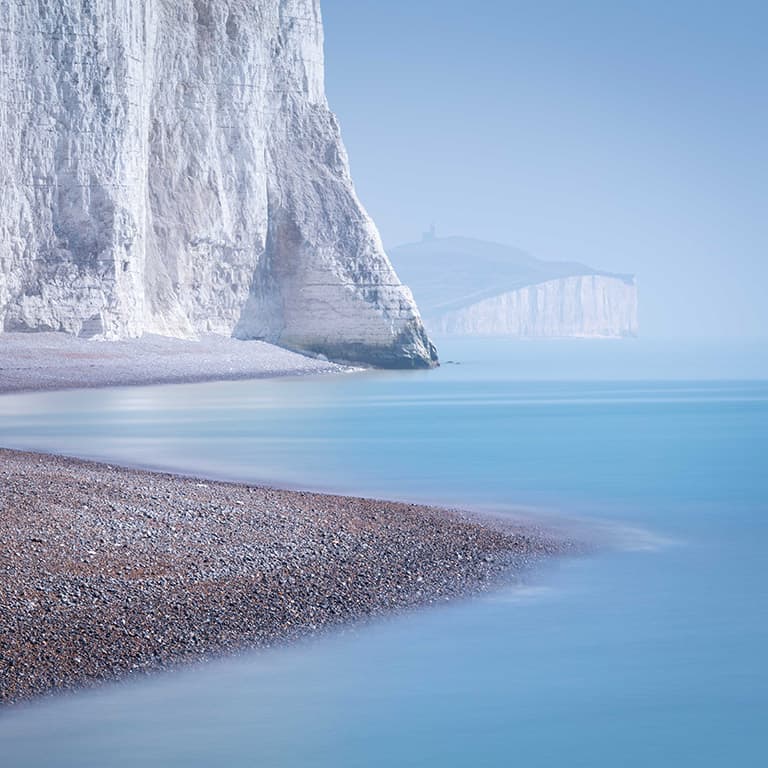
Return to the same place for coastal and seascape photography
Rachael can happily spend all day at the beach – once she was even lulled to sleep by the sound of the waves in the Outer Hebrides. Scotland’s Western Isles are just one of four locations that she returns to regularly (the others being Sussex, Oregon and Portugal), and this familiarity, coupled with the knowledge that she will return, enables her to relax and be more experimental.
“Many of my best photographic moments have happened on the beach closest to where I live,” she says.
“On the rare occasion when I find myself somewhere new, I work better by promising myself I will be back.” This approach allows Rachael to focus on small details – water washing over a shell, or an abstract painting of rust, for example – without worrying too much about whether or not she has captured the ‘famous big vista.’
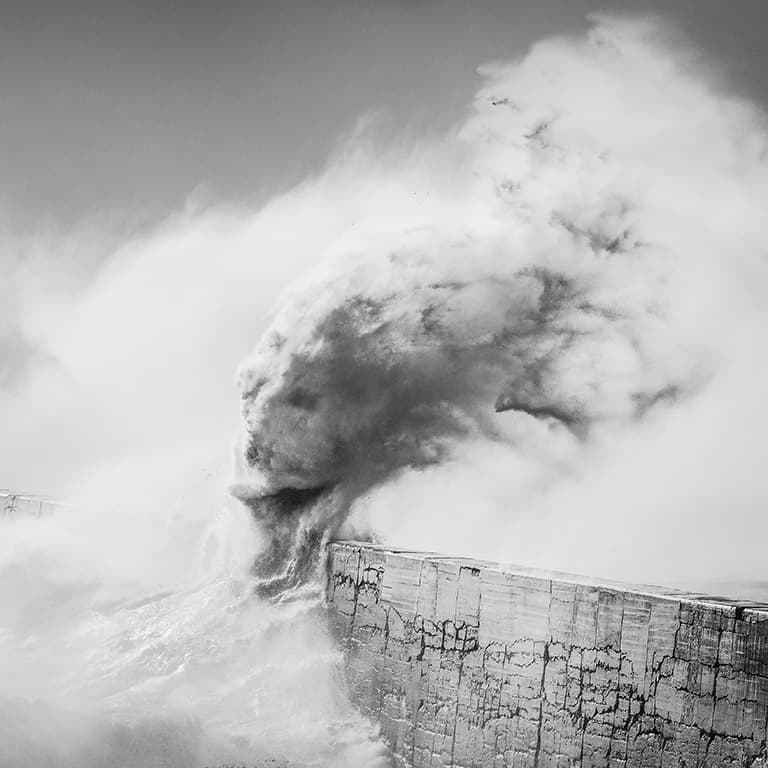
Coastal and seascape photography: notice the details
These quieter shots, often created at the tideline, are particularly rewarding for Rachael. “You can capture that moment nobody else has seen before the tide washes it away,” she suggests. “No one will have photographed that particular shell as the sea did that particular thing around it.” While these beautiful unplanned moments create unique opportunities, there are some things that Rachael never leaves to chance. “I would definitely never go out without knowing the tides, and I choose where I go based on that,” she reveals.
Using an app called NAUTIDE, she can see what the tide is doing two years in advance, which is essential when scheduling trips and workshops. “Knowing the tides drives what I do much more than the weather forecast,” she reveals. In fact, while plain, blue-sky days might be off-putting for some photographers, Rachael urges everyone to get out with the camera anyway. “If you’re pointing down at a shell, or a detail, it doesn’t matter what the sky is doing,” she assures.

Stay safe and aware
Of course, another reason for checking the tides is safety. “As I said before, I am very afraid of the sea, so I take safety seriously,” says Rachael. “Knowing your location really, really well certainly helps, but I would also advise standing a bit further back than the closest you think is safe, because when you’re concentrating on taking photographs, and you’re in the zone, you forget about everything around you.
“What’s more, if you’re using a long lens, you’ll be concentrating on a small part of the sea and you might not be aware of what the rest of the sea is doing. I definitely think it’s wise to keep looking.” Of course, ‘being in the zone’ is what we seek, but not paying attention to our surroundings can have dire consequences. In Newhaven, Sussex for example – where Rachael shot her Sirens series – lives have been lost to the sea. “I have seen some mad things down there,” Rachael warns.
Use robust equipment for coastal and seascape photography
While Rachael has never been in any serious danger at the coast, she admits to being ‘surprised’ by a wave in Portugal, leading to an expensive camera repair bill. “I’ve tested the weather-sealing on the Canon EOS 5DS R thoroughly, and I can tell you it works!” she laughs. “The only thing you can’t do is immerse it in the sea!”
Rachael uses two 5DS R bodies and a Fuji X-T2 (mainly for video). “I handle lots of different cameras on my workshops, but my Canon feels like an extension of my hands – I never have to think about it,” she explains. She teams the EOS 5DS R with one of four lenses: 16-35mm, 24-70mm, 70-200mm or 100-400mm.
“The lens I use most has changed over time,” she explains. “When I started out, the 16-35mm would have been my go-to lens, and it still is if there is an amazing sky, but over time I’ve found myself using ever-longer focal lengths. I really enjoy shooting with the 100-400mm at the long end, picking out patterns on the surface of the sea or in the waves, for example.” If the spray is strong, Rachael uses an inexpensive Op/Tech rain sleeve to protect her gear.
Get out there
At this time, experiencing the vigour and majesty of nature is a genuine tonic. “Nature is therapeutic and redemptive,” says Rachael. “As a species, we have become disconnected from nature and it has allowed us to abuse and exploit the natural world, rather than having a symbiotic relationship with it. I think the more time we spend in the company of nature the more likely we are to become the best version of ourselves.” Surely, there’s no better reason to head to the coast.
Rachel’s top tips for coastal and seascape photography
Follow your passion
Ask yourself what it is you love – it might be food, dance or, in Rachael’s case, the sea. Find something you could spend a lifetime exploring without getting bored, and dedicate yourself to photographing it. The deeper you dig, the more you will find.

It’s all in the detail
If you shoot on a falling tide, interesting details will often be revealed on the rocks and sand. Rachael admits that she probably spends more time on these ‘quiet’ pictures than she does shooting ‘scary waves’. It’s also an ideal time to shoot because the sand will be free of footprints.
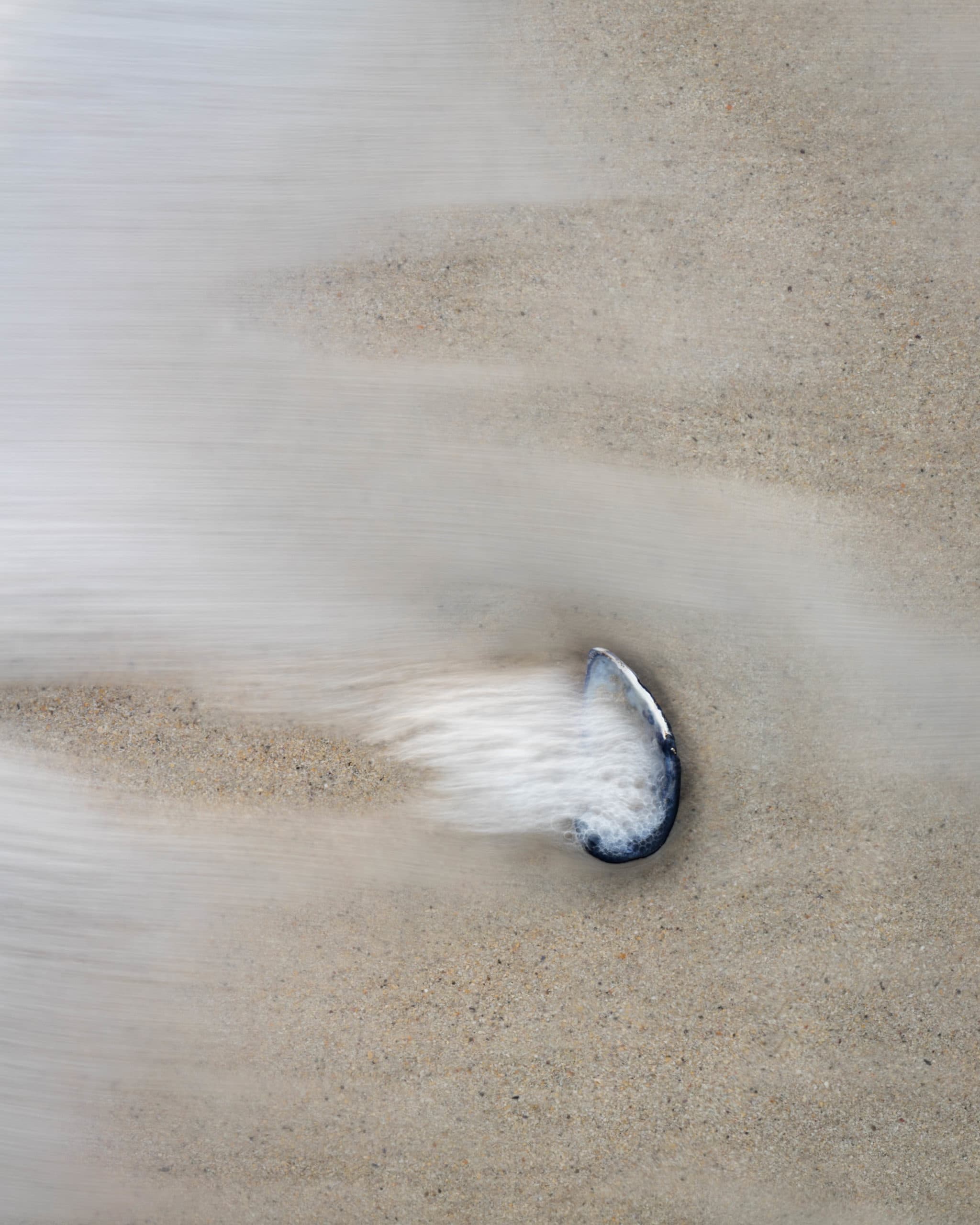
Check the highlights
While Rachael isn’t fond of ‘chimping’ (constantly reviewing images on the LCD screen), she advises checking the histogram occasionally to avoid blown-out highlights. When storms are blowing through quickly, the sun is constantly peeking through the clouds, which can create problems on white foam.

Leave a gap
Rachael likes to leave a long gap between capturing images, reviewing them, and editing them. By allowing these intentional pauses, the emotional high from the shoot dissipates and she can edit her work calmly and objectively. Generally speaking, she only spends 10 minutes or so editing a picture.
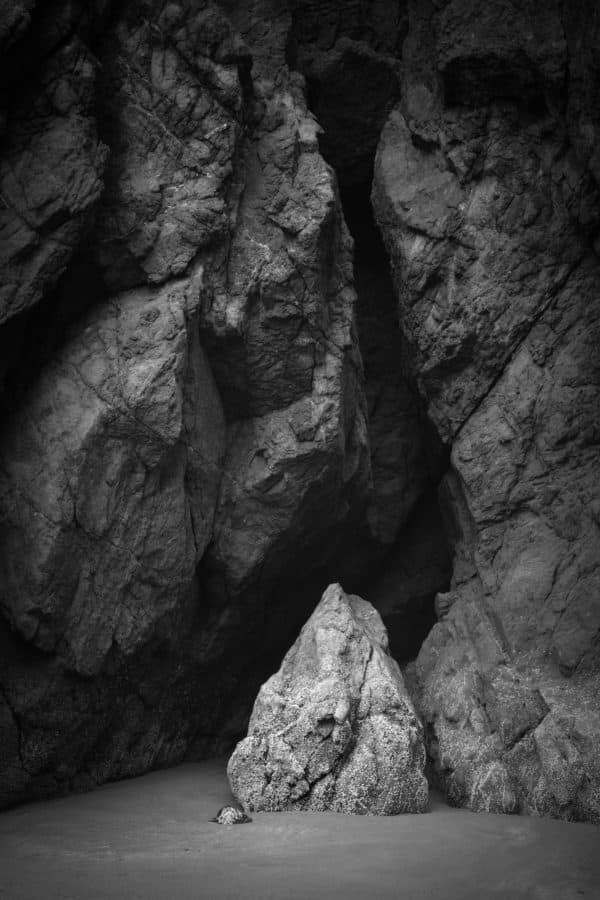
Know the tides
Never go out without knowing the tides, for safety and for photographic purposes. When there’s a big tide Rachael likes to go to Birling Gap because more sand will be revealed (it’s predominantly pebbly), but if it’s shallow she prefers West Wittering – although on a big tide you have to walk out to get to the sea.
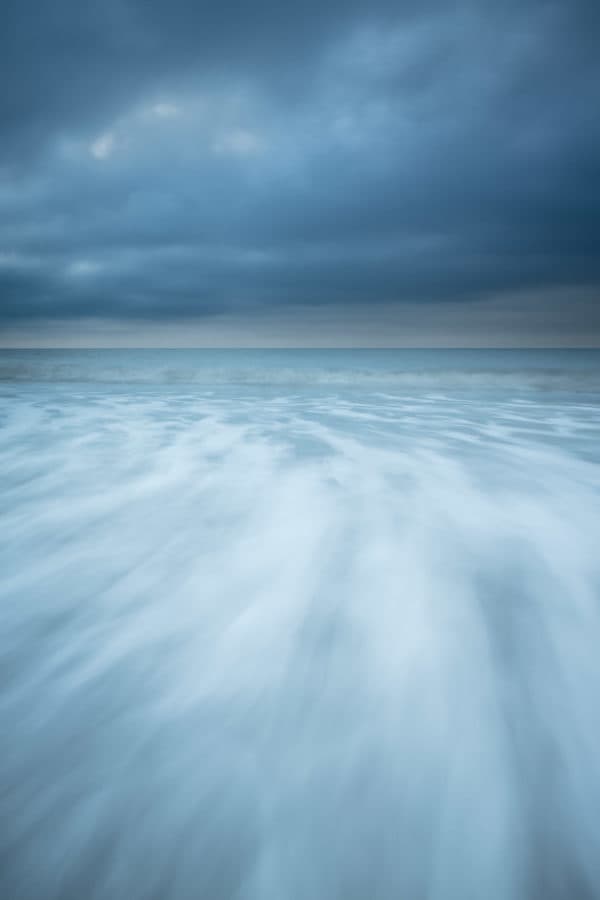
Try black & white
Perhaps unusually, Rachael finds it easy to switch between black & white and colour. To assist her, she shoots raw, but switches the in-camera Picture Style to Monochrome – that way she retains all the detail while being able to see what a later monochrome conversion will look like.

Rachel’s kit list for coastal photography and seascapes
Fotospeed paper
Rachael recommends checking out Fotospeed’s website for tutorials. (Rachael also runs printing workshops via her company f/11.) One of her favourite papers is Fotospeed NST Bright white 315.
Canon 100-400mm lens
Rachael predominantly uses four lenses, but the Canon 100-400mm is her favourite for picking out patterns and details. She also uses a 24-70mm lens for ‘proper’ abstracts, as it allows her to get close to her subjects and is sharp from corner to corner.
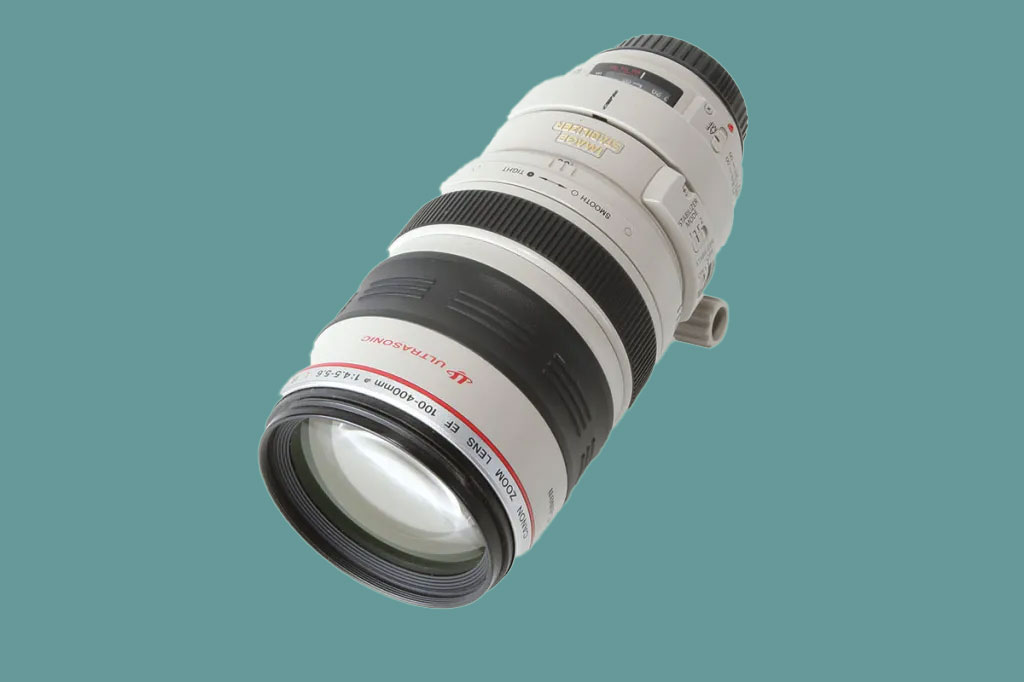
NAUTIDE app
For tide, wind and wave information the NAUTIDE app is hard to beat. Rachael used to use a simpler app that told her the times of high and low tide at locations, but it wasn’t enough. With NAUTIDE she can see tide heights and depths, and predict a big spring tide or shallow neap tide years in advance.
LEE Filters
Rachael is a LEE Filters master and wouldn’t be without a set of grads in her kit bag. She often uses a 0.6 ND Hard Grad, but has recently gravitated towards a lighter version (the 0.3) for more subtlety. She also uses a 3-stop ProGlass ND and a polariser.
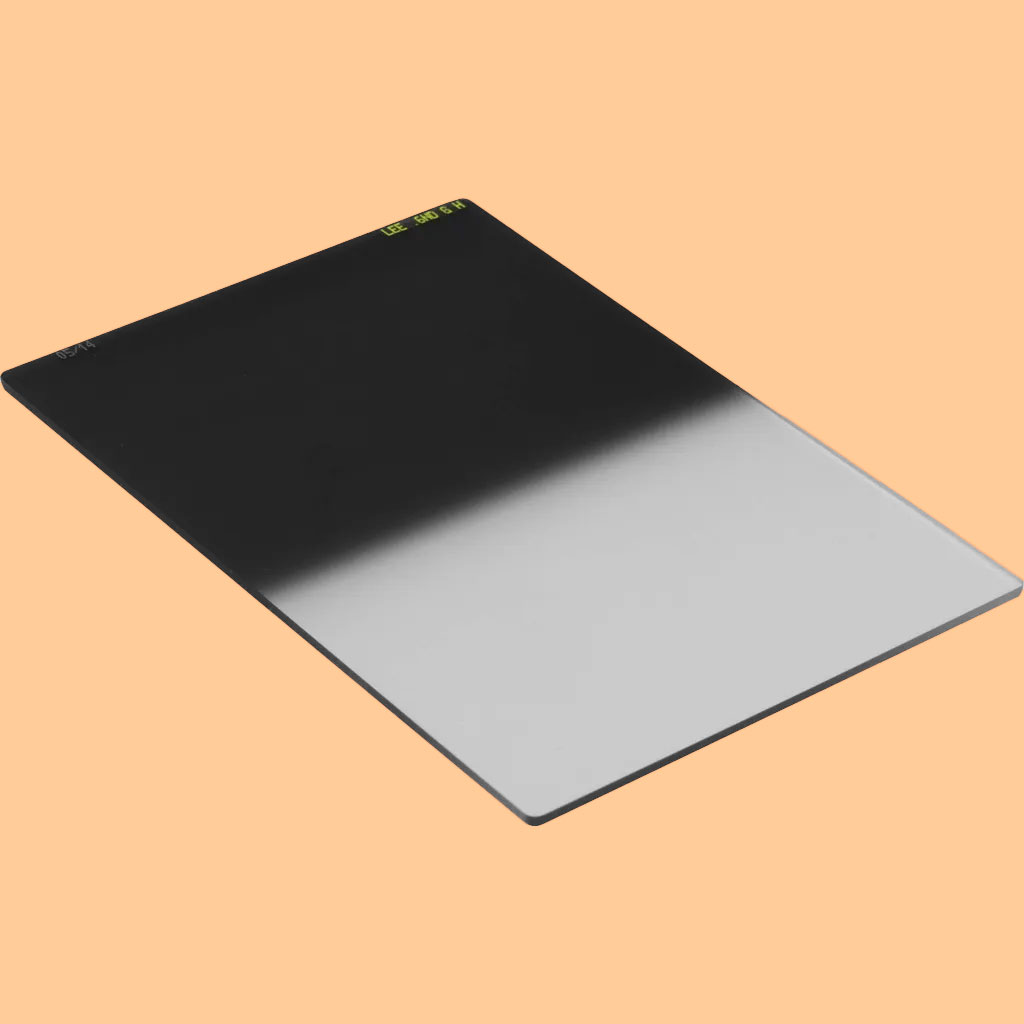
Op/Tech rain sleeve
Op/Tech rain sleeves are super-cheap and can be screwed up and carried in your pocket. They feature a drawstring opening for a snug fit around lenses, and an opening for the eyepiece so you don’t have to look through a piece of plastic. Perfect for protecting your gear from sea spray.
Canon EOS 5DS R
The weather-sealing on the Canon EOS 5DS R has been put to the test countless times by Rachael and, apart from one immersion experience, it has never let her down. This DSLR offers 50.6 million pixels, and provides critical sharpness when she needs it the most.

Check out Rachael’s book
Rachael’s beautiful book, Tides and Tempests, features more than 120 images. There are a few signed copies still available, see here for more information.
Check out some landscape photography locations here and check out the best cameras for landscape photography.
Featured Image: Clearing Fog, 2017. Canon EOS 5DS R, 24-70mm, 1/250sec at f/10, ISO 100
Further reading

